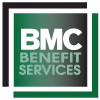In a bipartisan effort, the U.S. Congress agreed on a spending package to fund the federal government which included
important changes to federal laws affecting employer-sponsored group health and welfare benefit plans. The legislation
was signed into law by the President on December 20, 2019.
The law repeals the following taxes under the Affordable Care Act (“ACA”):
• 40% tax on high cost health plans (a.k.a., the “Cadillac Plan Tax”) after December 31, 2019.
• 2.3% medical device tax on sales after December 31, 2019.
• Annual Health Insurer Tax (“HIT”) for calendar years beginning after December 31, 2020.
In an interesting turn of events, the new law reinstates the Patient-Centered Outcomes Research (PCOR) fee through
September 30, 2029 for insured and self-funded health plans. Prior to enactment of this new law, many plans had paid
their final PCOR fee as July 31, 2019 or were scheduled to pay their final assessment on July 31, 2020. With reinstatement
of the fee, insured and self-funded plans will continue with these payments into 2029 and (in some cases) 2030. More
guidance will be issued from the IRS as to future PCOR fee amounts and process. The cost per covered life is $2.45.
Employer Action
• Employers can breathe a sigh of relief as the Cadillac Plan Tax will no longer take effect on January 1, 2022. The
repeal of the medical device tax and HIT tax will also provide some cost relief to employer sponsored plans.
• With the PCOR fee reinstated for ten more years, employers should continue to prepare for compliance. While
insurance carriers will pay the fee for fully insured plans, employers are responsible for paying the PCOR fee for selffunded health plans, including health reimbursement arrangements (“HRAs”).
• It is expected that employers sponsoring self-funded health plans (including HRAs) will continue to use IRS Form
720 to file and pay the PCOR fee with an expected due date of July 31 of the calendar year immediately following
the last day of the plan year.
• The IRS is expected to issue an inflation adjusted amount to use for the next reporting period.
If you have any questions, be sure to contact us.
